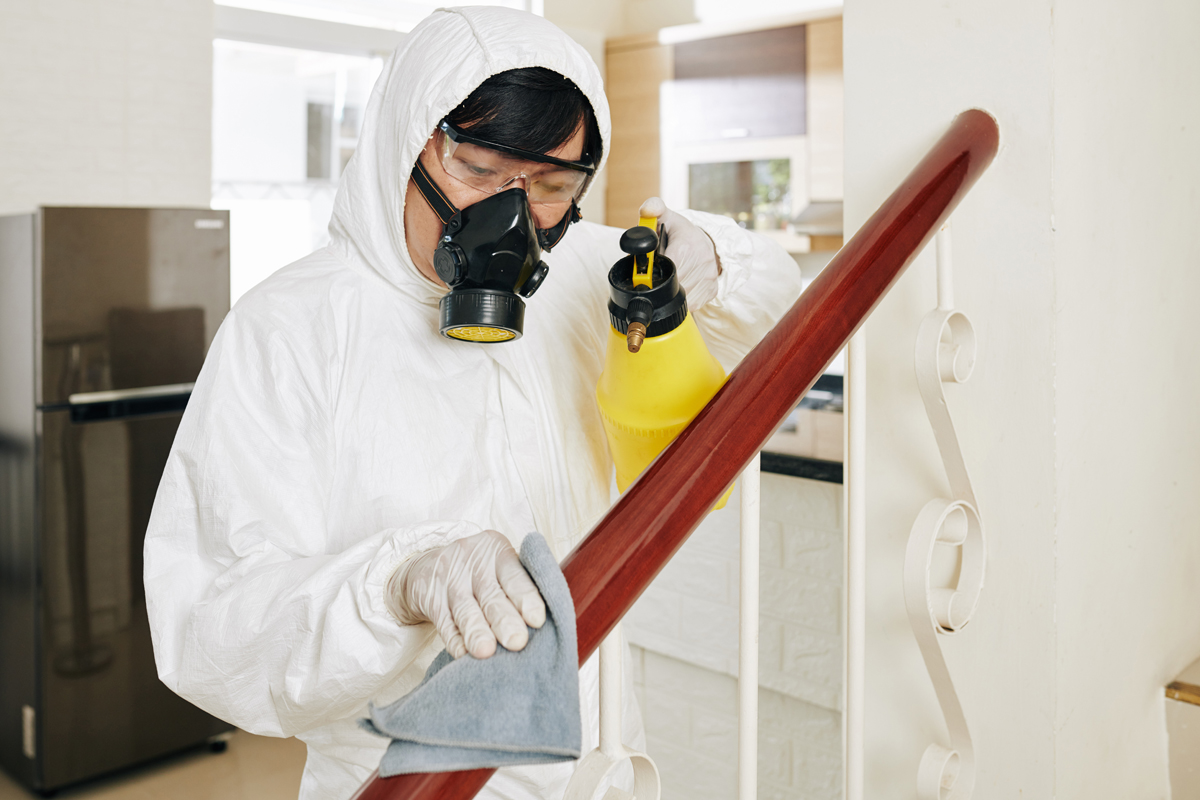Asbestos Testing: Thorough Inspections to Ensure Complete Safety
The Total Process of Accredited Asbestos Evaluating to Make Sure Residential Or Commercial Property Compliance
In the realm of home management and conformity, the process of accredited asbestos screening stands as an important component to make certain the security and well-being of owners. From the preliminary assessment to the last interpretation of outcomes, each phase plays a vital role in figuring out the visibility of asbestos within a building.
Accredited Asbestos Testing: First Evaluation
In conducting the preliminary evaluation for approved asbestos testing, a thorough evaluation of the property's products is essential to properly identify prospective asbestos-containing products. This essential step entails aesthetically examining all locations of the residential or commercial property, consisting of ceilings, wall surfaces, flooring, insulation, and other structure products that may harbor asbestos. Unique focus is given to products that are prone to damage or disturbance, as these scenarios can launch damaging asbestos fibers right into the air. In addition, sampling of suspected materials might be essential to validate the presence of asbestos through lab evaluation.
Approved asbestos assessors adhere to rigorous methods established by regulative bodies to make sure the accuracy and integrity of the testing process. By meticulously recording searchings for and making use of sophisticated testing methods, assessors can provide homeowner with a comprehensive report detailing the presence of asbestos, if any kind of, and the advised steps for mitigation or elimination. This first evaluation sets the structure for succeeding actions to attend to asbestos worries and guarantee the safety and conformity of the residential property.
Sample Collection Procedures for Asbestos Examining
Efficient sample collection treatments are important in ensuring exact asbestos testing outcomes and compliance with governing standards. When accumulating samples for asbestos screening, it is crucial to comply with rigorous procedures to decrease the danger of contamination and guarantee the integrity of the results.
To start with, it is essential to determine the suspected asbestos-containing materials (ACMs) and focus on tasting areas based upon variables such as the product's condition, access, and potential for disturbance. Asbestos Testing. Examples need to be collected from different areas within the residential or commercial property to supply a comprehensive assessment of asbestos presence
Throughout example collection, licensed professionals should use ideal individual protective equipment (PPE) to protect versus asbestos direct exposure. They have to utilize tidy devices, such as non reusable handwear covers and plastic bed linen, to stop cross-contamination between samples. Samples ought to be very carefully accumulated making use of a defined method, such as wet wiping or coring, and safely sealed in closed containers to protect their stability during transportation to the lab for evaluation.
Lab Evaluation Process for Asbestos Examples
Upon conclusion of the example collection procedure, the asbestos examples are thoroughly delivered to recognized labs for careful analysis. At the laboratory, trained specialists handle the samples with extreme care to protect against any kind of cross-contamination or example deterioration. The initial step in the laboratory evaluation process is sample prep work, where the accumulated examples are thoroughly refined to remove the asbestos fibers. Asbestos Testing. This action is vital to make sure accurate lead to the succeeding analysis.

Once the evaluation check this is complete, review an in-depth report is generated, laying out the searchings for and validating whether asbestos is existing, the type of asbestos fibers recognized, and the concentration levels. This details is important for home proprietors to take the necessary steps to make certain compliance with asbestos policies and safeguard the health of owners.
/SPR-about-asbestos-testing-1822419-04-c051aea2b174420f924d7414bdf6360a.jpg)
Coverage and Interpretation of Asbestos Test Outcomes
Accredited asbestos testing labs give detailed reports that provide vital understandings right into the existence, kind, and concentration levels of asbestos fibers discovered in examples accumulated from homes. These records are crucial for building owners and supervisors to comprehend the risk postured by asbestos and make notified choices concerning its monitoring or elimination. The records typically include information on the methods used for testing, the locations from which samples were taken, the kind of asbestos determined (such as chrysotile, amosite, or crocidolite), and the focus degrees of asbestos fibers found.
Analyzing these outcomes needs experience to assess see it here the possible wellness threats linked with asbestos direct exposure, establish the appropriate program of activity, and make sure regulative compliance (Asbestos Testing). Depending on the searchings for, referrals might range from continued monitoring and upkeep to encapsulation or full asbestos abatement. Home owners ought to thoroughly review these records and seek advice from with asbestos experts to develop a comprehensive prepare for attending to any type of asbestos issues recognized
Making Sure Home Conformity With Asbestos Rules
To keep adherence with asbestos guidelines, building proprietors need to carefully execute steps to ensure conformity with applicable regulations and standards. When asbestos is identified, residential or commercial property owners have to adhere to asbestos administration prepares that synopsis correct containment, removal, or encapsulation procedures to prevent exposure and spread of asbestos fibers.
Home proprietors should supply asbestos recognition training to staff members and owners to reduce the danger of asbestos exposure and make sure appropriate handling of materials that may consist of asbestos. Furthermore, it is vital to remain notified concerning any updates or adjustments in asbestos laws to adjust management methods as necessary. By proactively attending to asbestos conformity demands, residential property owners can create a safe setting for owners and alleviate prospective legal and health threats related to asbestos exposure.
Conclusion
Finally, recognized asbestos testing is a critical procedure for guaranteeing residential or commercial property compliance with laws. The preliminary assessment, example collection procedures, research laboratory analysis, and analysis of results are all vital actions in this process. By adhering to these procedures, homeowner can identify and resolve any type of asbestos hazards existing, safeguarding the health and wellness of passengers and preserving compliance with regulative requirements.